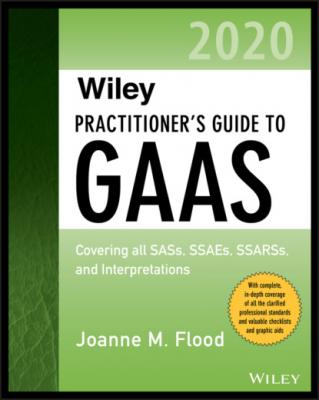|
A.
|
Obtain the necessary Section 324 report(s), either from the client or directly from the service organization.
|
|
|
|
|
Read and Assess the Implication of the Type 1 or Type 2 Report
|
|
|
|
B.
|
Read the service auditor’s report and assess its implications for the audit of the entity’s financial statements, including:Whether the service auditor prepares a type I or type II reportThe nature of the opinions rendered and whether these included any modifications to the standard reporting languageThe timing of the engagement, that is,The date “as of” which the description of controls appliesThe period of time covered by the tests of operating effectiveness of controls, if control risk is to be assessed below the maximum
|
|
|
|
B.
|
Read the description of the service organization’s controls and evaluate the effect of the following on the audit of the entity’s financial statements:Whether the description includes all significant transactions, processes, computer applications, or business units that affect the audit of the entity’s financial statementsWhether the description includes all five components of internal controlWhether the description is sufficiently detailed to understand how the service organization’s processing affects the entity’s financial statements, including estimates and disclosuresChanges to service organization controlsInstances of noncompliance with service organization controlsWhether the description of controls is adequate to provide an understanding of those elements of the entity’s accounting information system maintained by the service organization
|
|
|
|
B.
|
List all complementary user organization controls identified in the type 1 or type 2 report that the service auditor assumed were maintained by the entity. Cross-reference this list to the audit work performed to:Understand the design of these complementary user controls and whether they have been placed in operation, andIf applicable, tests of operating effectiveness of these controls.
|
|
|
|
|
Tests of Operating Effectiveness (if applicable)
|
|
|
|
B.
|
Review the service auditor’s description of the tests of controls and assess their adequacy for your purposes. Consider:The link between the financial statement assertion and the control objectiveThe link between the control objective and the controls testedThe nature, timing, and extent of the tests performed
|
|
|
|
B.
|
Evaluate the results of the tests of controls and determine whether they support assessing control risk below the maximum.
|
|
|
14 AU-C 450 Evaluation of Misstatements Identified during the Audit
Scope
Definitions of Terms
Objective of AU-C Section 450
The Nature and Causes of Misstatements
Requirements
Accumulation of Misstatements
Communication and Correction of Misstatements to Management
Evaluating the Effect of Uncorrected Misstatements
The Qualitative Characteristics of Misstatements
Prior Period Misstatements
Misstatement Worksheet
Documentation Requirements
SCOPE
The auditor must evaluate the effect of identified misstatements and uncorrected misstatements. AU-C 450 provides guidance on the evaluation.
DEFINITIONS OF TERMS
Source: AU-C 450.04. For definitions related to this standard, see Appendix A, “Definitions of Terms”: Misstatement, Uncorrected misstatements.
OBJECTIVE OF AU-C SECTION 450
The objective of the auditor is to evaluate the effect of:
1 Identified misstatements on the audit and
2 Uncorrected misstatements, if any, on the financial statements
(AU-C Section 450.03)
The Nature and Causes of Misstatements
A misstatement may consist of:
An inaccuracy in gathering or processing data from which financial statements are prepared
An omission of a financial statement element, account, or item, or information required to be disclosed under the applicable financial reporting framework
Financial statement disclosures that are not in accordance with the applicable financial reporting framework
An incorrect accounting estimate arising from, for example, an oversight or misinterpretation of facts
Differences between management’s and the auditor’s judgments concerning accounting estimates, or the selection and application of accounting policies that the auditor considers inappropriate (for example, a departure from GAAP).
(AU-C 450.A1)
REQUIREMENTS
Accumulation of Misstatements
The auditor must accumulate misstatements identified during the audit, other than
